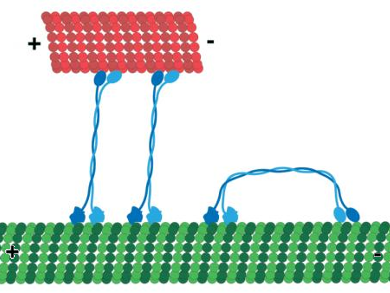Motor proteins are tiny molecular machines that convert chemical energy into mechanical work. They shuttle cellular cargos between locations and generate forces to position chromosomes. Although they have been intensely studied over many years, mechanisms underlying the actions of many motor proteins are still unclear.
Weihong Qiu, Oregon State University, Corvallis, USA, and colleagues focused on the motor protein KlpA and used a high-sensitivity light microscopy method to directly follow the movement of individual KlpA molecules on their cytoskeleton track. The team discovered that KlpA is able to move in opposite directions. A surprising finding, as KlpA-like motor proteins are thought to be exclusively one-way vehicles.
The N-terminal nonmotor microtubule-binding tail of KIpA functions as a switch for controlling the direction of movement. The tail can either bind to the same microtubule as the motor domain or to a differnt one. This allows it to localize and move to different regions inside the cell. By this, it can help ensure that chromosomes are properly divided for normal cell division.
KlpA-like motors in humans are crucial to cancer cell proliferation and survival. Better understanding could eventually lead to novel approaches to cancer treatment.
Illustration by Kuo-Fu Tseng, courtesy of Oregon State University.
- The mitotic kinesin-14 KlpA contains a context-dependent directionality switch,
Andrew R. Popchock, Kuo-Fu Tseng, Pan Wang, P. Andrew Karplus, Xin Xiang, Weihong Qiu,
Nature Communic. 2017.
DOI: 10.1038/ncomms13999



